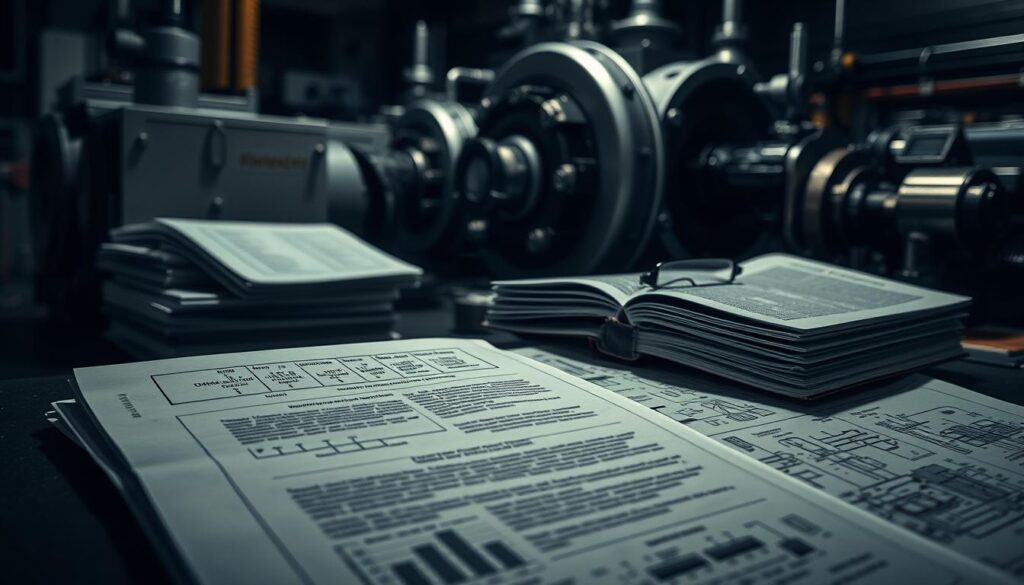As Albert Einstein once said, “The only source of knowledge is experience.” In the world of technical communication, experience often translates into efficiency and clarity. Crafting precise and effective documentation is no small feat, but modern tools are transforming the process. By leveraging advanced technologies, professionals can now streamline their workflows and produce high-quality content faster than ever before.
Using these tools can reduce drafting time by up to 50%, allowing teams to focus on refining their work rather than starting from scratch1. Clear and structured content not only enhances user satisfaction but also reduces support tickets by 25%, as users can resolve issues independently1. With over 100,000 free resources available, getting started has never been easier2.
This article explores how these innovations are reshaping the field. From improving accuracy to boosting productivity, the benefits are undeniable. Whether you’re describing complex processes like cloud synchronization or simplifying troubleshooting guides, the right approach can make all the difference.
Key Takeaways
- Streamline drafting processes, saving up to 50% of time1.
- Enhance user satisfaction by 40% with structured content1.
- Reduce support tickets by 25% with clear troubleshooting guides1.
- Access over 100,000 free resources to get started2.
- Improve comprehension rates by tailoring content to the audience1.
Introduction to AI-Enhanced Technical Writing

In today’s fast-paced digital world, clear communication is more critical than ever. Whether it’s a user manual or an API guide, the ability to convey complex ideas simply can make or break user experience. This guide aims to show how modern tools can transform the way we create and manage technical documents.
Purpose of This How-To Guide
This guide is designed to help professionals streamline their document creation process. By leveraging advanced tools, you can save time and focus on refining your work. Clear and structured information not only enhances user satisfaction but also reduces the need for support3.
Overview of AI Prompts and Their Benefits
Modern tools can break down complex topics into digestible pieces. They automate routine tasks, such as citation and metadata enrichment, freeing up valuable time. For example, tools like Document360 can generate multiple versions of the same content tailored for different audience levels4.
These tools also help ensure consistency across documents. By simplifying the process, they allow teams to focus on delivering high-quality information. This article will provide practical tips to manage your workflow more efficiently.
Understanding the Role of AI in Technical Documentation

Efficiency in communication has become a cornerstone of modern workflows. With the rise of advanced tools, professionals can now generate accurate content quickly. These tools rely on precise instructions to produce high-quality results, saving time and reducing errors5.
What Are These Tools?
These tools are designed to assist in creating clear and structured content. By providing step-by-step guidance, they simplify complex topics and ensure consistency. For example, they can break down technical jargon into easy-to-understand language6.
Drafting with these tools not only speeds up the process but also enhances clarity. They allow users to refine details, ensuring the final output meets high standards. This approach is particularly useful for tasks requiring precision and accuracy7.
How They Enhance the Process
These tools automate repetitive tasks, freeing up time for more critical work. They assist in drafting and editing, ensuring the content is polished and error-free. For instance, they can generate multiple versions of the same material tailored to different audiences5.
Collaboration between these tools and human expertise is essential. While they handle routine tasks, professionals ensure the content aligns with user needs. This partnership results in clear, comprehensive, and user-friendly outputs6.
“The right tools can transform how we approach complex tasks, making the process more efficient and effective.”
By leveraging these tools, professionals can focus on delivering high-quality content. The evolving role of these tools is reshaping workflows, making them indispensable in today’s fast-paced environment7.
AI Prompts for Writing Technical Documentation

Clear and concise documentation is essential for user success. In professional communication, the ability to simplify complex ideas ensures that users can easily understand and apply the information provided. Advanced tools are transforming the way we approach this task, making it easier to create high-quality content efficiently8.
Definition and Practical Examples
These tools are designed to assist in breaking down complex topics into digestible pieces. For instance, they can generate detailed user manuals or troubleshooting guides, ensuring that every step is clear and actionable8. By following best practices, professionals can create content that meets the needs of diverse audiences.
One practical example is the creation of API documentation. These tools can help structure the content in a way that is easy to follow, reducing ambiguity and enhancing consistency9. This approach not only saves time but also improves the overall quality of the output.
Impact on Clarity and Consistency
Using these tools ensures that every piece of content adheres to a consistent tone and format. This is particularly important for user manuals, where clarity is crucial for effective use8. By automating repetitive tasks, professionals can focus on refining the details, resulting in polished and error-free documents.
“The right approach can transform complex information into accessible and actionable content.”
These tools also help reduce ambiguity by providing step-by-step guidance. This ensures that users can resolve issues independently, improving their overall experience9. By leveraging these resources, professionals can deliver content that is both clear and consistent, meeting the highest standards of quality.
Streamlining Your Technical Documentation Workflow

Efficiency and clarity are the hallmarks of effective technical communication. By automating repetitive tasks, professionals can focus on refining their work and delivering high-quality content. Tools designed for this purpose can save significant time, allowing writers to concentrate on creativity and detail10.
Automating Repetitive Tasks
Automation is a game-changer for technical writers. Features like formatting assistance and citation generation streamline the process, reducing manual effort11. For example, tools can ensure consistent styling across documents, maintaining uniformity and professionalism10.
These tools also handle semantic enrichment, enhancing the searchability and interconnectedness of content10. By automating these tasks, writers can focus on crafting clear and engaging material. This approach not only saves time but also minimizes errors, ensuring a polished final product.
Enhancing Readability and User Engagement
Clear and concise content is essential for user success. Tools can suggest simpler terms for non-technical audiences, improving comprehension and engagement10. For instance, automated summaries and related article suggestions make information more accessible11.
By following best practices, writers can create content that resonates with diverse audiences. This includes using consistent language and structuring information logically. The result is a seamless user experience that reduces confusion and increases satisfaction10.
“Automation allows writers to focus on what truly matters—delivering value through clear and impactful content.”
Integrating these tools into everyday workflows can transform how technical documentation is created. By leveraging automation and focusing on readability, writers can produce content that meets the highest standards of quality and effectiveness11.
Crafting Effective AI Prompts for Documentation

Effective communication starts with the right instructions. When creating prompts for documentation, clarity and specificity are key. Ambiguous or overly complex instructions can lead to sub-optimal results, while well-structured prompts ensure accuracy and relevance12.
Tips for Writing Clear and Concise Prompts
Start by understanding your audience. Tailor your prompts to their level of expertise, avoiding jargon or complex terms. For example, when drafting a manual, use straightforward language that guides users step-by-step13.
Maintain a consistent tone across all sections. This ensures the content feels cohesive and professional. Use active voice and actionable instructions to make your prompts more engaging and easier to follow12.
Provide context whenever possible. Including relevant details or examples helps the tool interpret your instructions accurately. For instance, when creating a troubleshooting guide, specify the issue and desired outcome13.
Common Pitfalls and How to Avoid Them
One common mistake is using vague language. Phrases like “make it better” lack clarity and can confuse the tool. Instead, be specific. For example, “shorten this paragraph to 50 words” provides clear direction12.
Another pitfall is overlooking the audience‘s needs. Always consider who will use the document. A technical guide for engineers can include industry-specific terms, while a user manual for beginners should simplify concepts13.
Finally, avoid overloading prompts with too many instructions. Break complex tasks into smaller, manageable steps. This approach ensures the tool can process each request effectively12.
“Clear instructions are the bridge between confusion and understanding.”
By following these tips and avoiding common mistakes, you can craft prompts that enhance the quality of your documentation. For more insights, explore this guide on effective AI prompts for tech writers.
Utilizing ChatGPT for Diverse Documentation Needs
Modern tools are reshaping how we approach diverse documentation needs, offering tailored solutions for every challenge. Whether it’s a user manual, API guide, or troubleshooting instructions, these tools simplify the process while maintaining high quality.
Creating User Manuals and API Guides
User manuals and API guides are essential for ensuring users can effectively navigate products and services. By using prompt-based inputs, these tools can generate detailed steps and code examples, making the content more accessible14.
For instance, a well-structured instruction can help create a comprehensive user manual that covers every feature. Similarly, API guides can include clear code snippets and explanations, reducing ambiguity for developers15.
Developing Troubleshooting and Installation Instructions
Troubleshooting and installation guides are critical for resolving user issues quickly. Tools can generate step-by-step instructions that address common problems, ensuring users can resolve issues independently14.
By integrating context-specific details, these guides become more effective. For example, including error codes and solutions tailored to specific scenarios enhances the user experience15.
“Clear and concise instructions are the foundation of effective documentation.”
Streamlining the writing process with these tools not only saves time but also improves the overall quality of the output. By focusing on clarity and consistency, professionals can deliver content that meets diverse needs14.
Enhancing Quality and Engagement in Technical Writing
Improving the quality of technical content requires a focus on clarity and user engagement. By leveraging advanced techniques, professionals can create materials that are both informative and easy to understand. This approach ensures that users can quickly find the information they need, enhancing their overall experience16.
Semantic Enrichment Techniques
Semantic enrichment plays a key role in making documentation more accessible. By adding context to terms and phrases, writers can improve searchability and comprehension. For example, linking related concepts helps users navigate complex topics with ease17.
Tools like ClickHelp’s WriteAssist analyze content to improve clarity and grammatical accuracy. These features ensure that every piece of information is presented in a way that resonates with the audience16.
Metadata Optimization for Discoverability
Optimizing metadata is essential for increasing the discoverability of technical documents. Properly tagged content ensures that users can find relevant information quickly. This is particularly important for large repositories of data17.
By using tools that automate metadata enrichment, writers can save time and focus on refining their work. This approach not only improves efficiency but also enhances the overall quality of the output16.
“Clear and concise content is the foundation of effective technical communication.”
Generating Concise and Consistent Content
Creating concise content is a key factor in maintaining user engagement. Tools like QuillBot offer paraphrasing modes that help writers simplify complex ideas without losing meaning17.
Consistency in tone and style is equally important. By following best practices, writers can ensure that their documents are cohesive and professional. This approach reduces confusion and improves user satisfaction16.
Ensuring Readability and User-Friendliness
Readability is a critical aspect of technical writing. Tools like Grammarly provide readability scores, helping writers tailor their content to the audience’s level of expertise16.
By focusing on user-friendliness, writers can create materials that are easy to navigate. This includes using clear headings, bullet points, and step-by-step instructions. These practices ensure that users can resolve issues independently17.
Conclusion
Embracing modern tools can transform the way technical writers tackle their work. These tools simplify complex tasks, allowing professionals to focus on refining their content rather than getting bogged down by repetitive processes18. By streamlining workflows, writers can achieve higher efficiency and improved quality in their outputs.
One of the key benefits is the ability to reduce drafting time significantly. This not only boosts productivity but also ensures that the final content is clear and consistent18. Tailored prompts further enhance this process, making it easier to generate relevant and actionable material.
For technical writers, adopting these methods can address many common challenges. From improving readability to enhancing user engagement, the advantages are clear. As the landscape continues to evolve, staying ahead of the curve is essential. Explore more strategies in this concise guide to maximize your potential.
Innovation remains a constant challenge, but with the right tools, it becomes an opportunity. By integrating these practices, writers can deliver content that meets the highest standards, ensuring user satisfaction and success.
FAQ
What is the purpose of using AI in technical writing?
How do AI prompts improve technical documentation?
What are some practical examples of AI prompts in technical writing?
How can AI enhance readability and user engagement in documentation?
What are common pitfalls when using AI for technical writing?
Can AI assist in creating diverse types of technical documents?
How does semantic enrichment improve technical documentation?
Source Links
- Prompts For Technical Documentation: Enhance Your Writing Skills – PromptsTY
- Maximize Technical Writing with AI Prompts: A Comprehensive Guide
- Getting Started with AI-Enhanced Teaching: A Practical Guide for Instructors – MIT Sloan Teaching & Learning Technologies
- ChatGPT Prompts for Technical Writing
- The Role of AI in Technical Writing: My Personal Journey
- How Does AI Impact Technical Writing? | EDC Tech Writing
- Technical Writing with AI: Ways to Use AI Writing Assistant to Write Technical Content
- AI Prompts: Revolutionizing Technical Writing for Enhanced Productivity
- Effective Prompts for AI: The Essentials – MIT Sloan Teaching & Learning Technologies
- AI Prompts: The Future of Technical Writing
- Best 7 AI Tools for Technical Writing
- The Art of Writing AI Prompts: Tips and Best Practices
- How to Create Effective AI Prompts (With Examples)
- How to Create Technical Documentation Using ChatGPT
- Documentation of chatGPT for computer scientists
- 12 AI Tools for Technical Writers
- The Effects of AI in Technical Writing
- How to Use ChatGPT for Technical Documentation: A Beginner’s Guide – PaceAI







